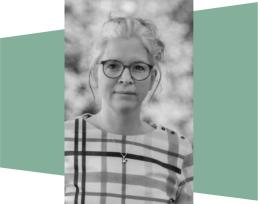Birgit Schneider
Birgit Schneider is Professor of Knowledge Cultures and Media Environments at Potsdam University. She was formerly a substitute professor of history and theory of cultural techniques at Bauhaus-University in Weimar, as well as a visiting fellow at Rachel Carson Center for Environment and Society in Munich. She was also a Senior Fellow at Internationales Kolleg für Kulturtechnikforschung in Weimar. Schneider is a co-speaker of the network "Digitale Geisteswissenschaften" at Potsdam University. Her fields of research include critical approaches to maps and data visualization, climate change visualization in between science, aesthetic and politics, cultural geography, the environmental humanties, and media aesthetics.
Amongst Schneider’s publications are these representative few: "Google-Gaia. Feedback Loops for Action with Global Forest Watch" (together with Lynda Olman). In: Gabriele Dürbeck / Philip Hüpkes (ed.): Narratives of Scale in the Anthropocene. Imagining Human Responsibility in an Age of Scalar Complexity (2021), Klimabilder. Eine Genealogie globaler Bildpolitiken von Klima und Klimawandel (2018), and The Technical Image. A History of Styles in Scientific Imagery, (together with Horst Bredekamp und Vera Dünkel, 2015).
Three Quick Questions:
In a few words, can you tell us about your current research interest?
I’m working on questions related to environmental media as part of different critical case studies: one of them is how trees and forests are transformed into operational images via satellites. Many of my subjects are related to the current ecological crisis and how media are introduced to render this crisis imaginable, but at the same time "operationable".
How do you relate the term poiesis to your work?
Images change the way we see the world. Data images such as google engine driven data worlds produced by AI and satellite imagery build a machinima and by this create new spaces to work on the planetary reality.
Which film or other audiovisual format has resonated with you lately and why?
Safe by Todd Haynes with Juliane Moore. This psychological drama from the year 1995 tells the story of a Californian woman who tries to escape a new environmental hyper sensitivity by escaping to an unpolluted retreat and increasingly withdrawing into her own shell. When I saw the movie this year, it reminded me of the new danger connected to breathing in pandemic times but also of the topic of radiation hypersensitivity in a world of media ubiquity.


